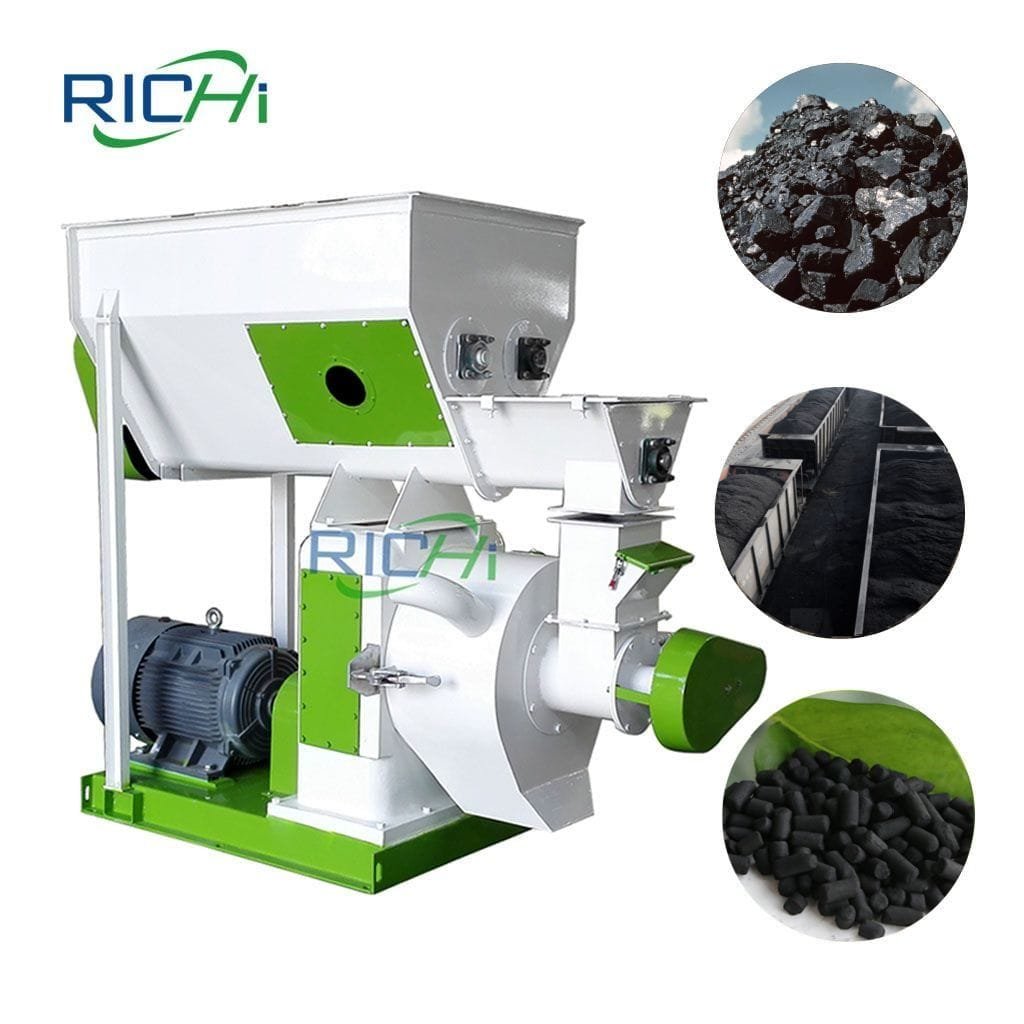Coal pellet making machines play a crucial role in converting coal fines and other coal-based materials into high-density fuel pellets. Ensuring the stable operation of these machines is essential for maintaining consistent production, minimizing downtime, and optimizing the efficiency of the overall coal pellet manufacturing process. This article outlines key strategies for maintaining the stable operation of coal pellet making machines during production.
1. Proper Machine Setup and Calibration
Ensuring that the coal pellet making machine is properly set up and calibrated is the foundation for stable operation.
- Adjust Die and Roller Settings: Proper adjustment of the die and roller settings is critical for achieving consistent pellet quality and maintaining machine stability. Consult the manufacturer’s recommendations for optimal settings based on the specific coal material being processed.
- Calibrate Sensors and Controls: Regularly calibrate the machine’s sensors and control systems to ensure accurate monitoring and control of key parameters such as temperature, pressure, and moisture content. Inaccurate readings can lead to operational instability.
- Perform Pre-Production Checks: Before starting production, perform a thorough inspection of the machine, including checking for any loose or damaged components, proper lubrication, and the availability of necessary consumables. This helps prevent unexpected issues during operation.
2. Consistent Raw Material Preparation
The quality and consistency of the raw coal material fed into the pellet making machine directly impact its stable operation.
- Ensure Proper Particle Size: The coal material should be crushed to the appropriate particle size, typically less than 6 mm, to ensure consistent compaction and pellet formation. Inconsistent particle size can lead to uneven wear on machine components and operational instability.
- Maintain Consistent Moisture Content: The moisture content of the coal material should be maintained within the recommended range, typically between 8-12%. Fluctuations in moisture content can affect pellet quality and machine performance.
- Implement Quality Control Measures: Regularly test the raw material for particle size distribution and moisture content to ensure consistency. Implement quality control measures such as screening and blending to maintain material uniformity.

3. Optimized Pelleting Process Parameters
Proper adjustment and control of the pelleting process parameters are essential for maintaining stable operation.
- Maintain Optimal Temperature: The temperature during the pelleting process should be maintained within the recommended range to ensure proper binding of the coal material. Significant deviations in temperature can lead to operational issues such as die plugging or poor pellet quality.
- Control Pressure and Friction: Excessive pressure or friction during the pelleting process can cause premature wear on machine components and lead to operational instability. Ensure that pressure and friction levels are within the machine’s design limits.
- Optimize Feeding Rate: Maintaining a consistent and optimal feeding rate is crucial for maintaining stable operation. Sudden changes in feeding rate can cause fluctuations in pressure and temperature, leading to operational issues.
4. Preventive Maintenance and Monitoring
Regular preventive maintenance and close monitoring of the coal pellet making machine are essential for ensuring stable operation.
- Implement a Preventive Maintenance Schedule: Develop and follow a preventive maintenance schedule that includes regular inspections, lubrication, and replacement of wear parts. This helps prevent unexpected breakdowns and ensures the machine operates at peak efficiency.
- Monitor Key Performance Indicators: Continuously monitor key performance indicators such as production output, energy consumption, and pellet quality. Deviations from normal values can indicate potential issues that require attention.
- Maintain Detailed Records: Keep detailed records of all maintenance activities, operational data, and any issues encountered. This information can help identify trends and patterns that may indicate the need for adjustments or upgrades to improve machine stability.
5. Operator Training and Skill Development
The skill and knowledge of the machine operators play a crucial role in maintaining stable operation.
- Provide Comprehensive Training: Ensure that operators receive comprehensive training on the proper operation and maintenance of the coal pellet making machine. This includes understanding the machine’s components, troubleshooting common issues, and following safety protocols.
- Foster a Culture of Continuous Improvement: Encourage operators to continuously learn and improve their skills. Provide opportunities for ongoing training and encourage them to share best practices and insights gained from their experience.
- Establish Clear Communication Channels: Establish clear communication channels between operators, maintenance personnel, and management. This allows for prompt reporting and resolution of any issues that may arise during production, minimizing downtime and ensuring stable operation.
6. Utilization of Advanced Technologies
Incorporating advanced technologies into the coal pellet making process can help enhance stability and efficiency.
- Implement Automation and Control Systems: Utilize automated control systems that can precisely monitor and adjust process parameters in real-time. This helps maintain consistent operating conditions and reduces the risk of human error.
- Employ Condition Monitoring Techniques: Use condition monitoring techniques such as vibration analysis and thermography to detect potential issues with machine components before they lead to failures. This allows for proactive maintenance and helps maintain stable operation.
- Utilize Data Analytics: Collect and analyze operational data to identify patterns and trends that may indicate potential issues or areas for improvement. Use this information to optimize machine settings and maintenance strategies for stable operation.
Conclusion
Maintaining stable operation of a coal pellet making machine during production is crucial for ensuring consistent product quality, minimizing downtime, and optimizing overall efficiency. By focusing on proper machine setup and calibration, consistent raw material preparation, optimized pelleting process parameters, preventive maintenance and monitoring, operator training and skill development, and the utilization of advanced technologies, producers can significantly enhance the stability and reliability of their coal pellet making machines. (Related post: ring die pellet machine )
As the demand for coal-based fuels continues to evolve, prioritizing the stable operation of coal pellet making machines will be essential for maintaining a competitive edge in the market. By investing in these strategies, producers can achieve greater operational efficiency, reduce costs, and contribute to the sustainable production of coal-based fuels.

